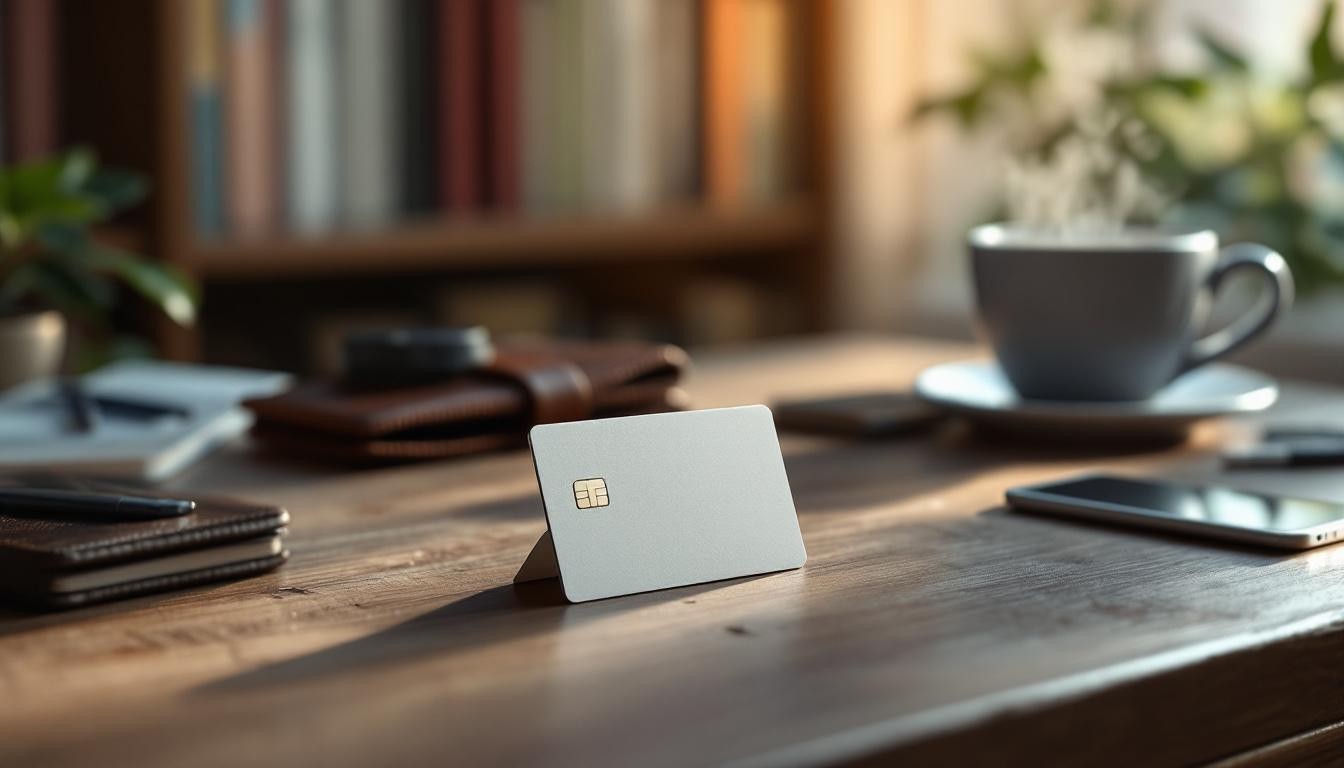Withdrawal Card or Payment Card: What Are the Differences? The Complete Guide
Are you wondering about the differences between withdrawal and payment cards, and which solution truly meets your needs? We will decrypt the specifics of each card type, enabling you to withdraw cash or make online and in-store purchases while mastering all parameters. Concretely, let's explore the advantages and limitations of each solution to better optimize your daily money management, from ceilings to applied rates.

Withdrawal Card
Let's discover the key characteristics and limitations of withdrawal cards. It's a relatively simple financial tool, but it has specific features to know.
- Functionality: The withdrawal card is used solely to withdraw cash. You can use it in ATMs or bank counters, offering instant access to your funds.
- Payments: The withdrawal card does not allow payment for purchases in stores, online, or by phone. This is precisely what distinguishes it from traditional bank cards, which are more comprehensive.
- Authorization: Withdrawal cards are generally systematic authorization cards. This means the account balance is systematically verified before each withdrawal. A security measure that prevents overdrafts and ensures strict budget management.
- Associated Accounts: These cards can be linked to different account types such as Livret A, youth accounts, Sustainable Development Passbooks (LDD), Popular Savings Passbooks (LEP), or current accounts. This link offers real daily flexibility.
- Network: International withdrawal cards work on most banking networks in France and abroad. They function notably on Mastercard (Cirrus) and Visa (Visa Plus) networks, facilitating withdrawals while traveling.
In summary, the withdrawal card is a practical and economical tool for accessing your money. It's the ideal solution for those who wish to control their finances and avoid superfluous fees. Since it offers direct cash access while limiting impulsive spending risks, it proves particularly practical for individuals seeking to manage their budget or avoid credit.
According to Crédit Agricole, the withdrawal card can be linked to a standard bank account or a Youth Account. For those seeking an alternative to traditional bank cards, the VERITAS Mastercard prepaid card can be an interesting option for better budget management.
Did you know it's possible to obtain a card even without a bank account? To learn more, consult our article: How to Have a Card Without a Bank Account. Less expensive than classic cards – here's an economical option for cash withdrawals.
Payment Card
To understand the nuances between various banking options, let's examine this detailed comparison. It illuminates the specificities of different payment card types.
| Feature | Immediate Debit Card | Deferred Payment Card | |
| Transaction Debit | Almost instantly from account (24-48h) | Billed once at a fixed date (monthly) | |
| Expense Tracking | Minute by minute | Blurrier vision, requires increased vigilance | |
| Budget Management | Perfect for maintaining financial control and preventing banking incidents | Increased flexibility, risk of overspending if relaxed | |
| Banking Fees | Often lower | Usually higher | |
| ATM Withdrawals | Immediately deducted, including with deferred payment cards | Instant deduction |
The impact on banking management differs according to card type. With an immediate debit card, each transaction is deducted without delay. This allows precise expense control and helps avoid unpleasant surprises. Naturally, this method is ideal for those wanting to master their spending.
A deferred payment card groups all operations realized in a monthly cycle and bills them in one go — an alternative offering real appreciated maneuvering room in payment management, as it allows anticipating unexpected expenses without directly puncturing the available balance.
Ceilings
Every bank card is subject to ceilings. Concretely, they govern withdrawals and payments, thereby limiting the amount one can spend during a given period daily. Ceilings are predefined, but it's possible to adapt them to your needs by contacting your bank — whether for a withdrawal or payment card.
Ceilings are generally calculated over a rolling 7-day period for withdrawals and a 30-day rolling period for payments. To discover your exact ceiling amount, simply consult your client space or contact your advisor directly — a simple and quick method to obtain these details, as they centralize all information related to your account and bank card.
Debit Card
The debit card is a particularly widespread payment method. It is directly linked to your bank account, allowing you to pay for purchases and make withdrawals. You can choose between an immediate or deferred debit card — offering daily flexibility in budget management.
Credit Card
Credit cards offer real convenience: they enable online and international purchases and are accepted almost everywhere. Used moderately, they can help build a credit history without surprises. They often include rewards like miles or cashback — advantages not to be neglected.
However, be cautious: credit cards can lead to unexpected expenses and debt if not managed daily. High interest rates and hidden fees must be anticipated. Obtaining a credit card may require a solvency analysis.
Fees
A withdrawal card is often free, while a payment card is typically paid in most cases. Logically, rates vary according to the account agreement. This is why it's crucial to compare fees associated with different cards before deciding.
Additionally, fees might be added if you withdraw money from a bank other than yours with your bank card. That's why it's important to compare associated fees and consider your withdrawal habits to choose the option best adapted to your needs. For example, you can consult the fees for VERITAS Mastercard.
Comparative Summary
| Characteristic | Withdrawal Card | Payment Card | |
| Functionalities | Cash withdrawal only at bank's ATMs | Cash withdrawal at all ATMs and payments (physical stores or online) | |
| Cost | Often free | Usually paid | |
| Acceptance | Restricted to ATMs for withdrawals | Recognized everywhere for payments and withdrawals | |
| Flexibility | Rather low | Significant (instant or deferred debit) | |
| Budget Management | Facilitates cash expense control | Requires careful management depending on debit type |
Choosing between a withdrawal and payment card depends primarily on your needs. The withdrawal card is ideal if you aim for strict budget management; the payment card offers more flexibility and payment possibilities.
Frequently Asked Questions
What are the disadvantages of a systematic authorization card?
Systematic authorization cards are secure for avoiding overdrafts; however, they have some drawbacks. They can be refused on certain terminals like toll booths or automatic service stations because these cannot always verify the balance in real-time.
Why might debit cards be refused?
Reasons include card expiration, incorrect PIN, an unactivated new card, damaged card, exceeded withdrawal or payment limits, an overdrafted account, or temporary blocking.
Can I make transfers with a withdrawal card?
No. A withdrawal card is designed only for cash withdrawal at ATMs. To make transfers, use a classic bank card or other methods provided by your bank.
Is a systematic authorization card compatible with installment payments?
Generally, no. Cards like Visa Electron, Maestro, and certain specific cards are often excluded from this option. Compatibility varies, so it's recommended to check with the merchant.
How can I know if my card has systematic authorization?
Look for the "DEBIT" mention on the card's front, observe if your account balance is verified before each transaction, or contact your bank directly for precise information.
Banking Restrictions: Payment Solutions Available to You
Family Allowance Age Limit for Two Children: The Complete Guide
Similar articles

Skimming, Phishing, Hacking: How to Avoid Scams Thanks to a Prepaid Card

Contactless Fraud: Is the Rechargeable Card the Best Defense in 2025?
The information provided on this blog is presented for informational purposes only and has no contractual or legal value. Although we strive to ensure the accuracy, completeness and updating of the published content, it may contain errors, omissions or inaccuracies. Carte Veritas and the authors of the articles cannot be held responsible for decisions or actions taken based on the information contained in this blog. Any use of this information is made at your own risk and under your sole responsibility. We encourage you to consult a qualified professional or an expert for any important question or decision relating to the subjects discussed. In addition, the information presented on this site may be modified or updated without notice. By visiting this blog, you agree that Carte Veritas and its partners are released from any liability concerning losses, direct or indirect damages, or consequences arising from the use of the contents of this site, whether they are linked to errors, omissions or the interpretation of the information published.
